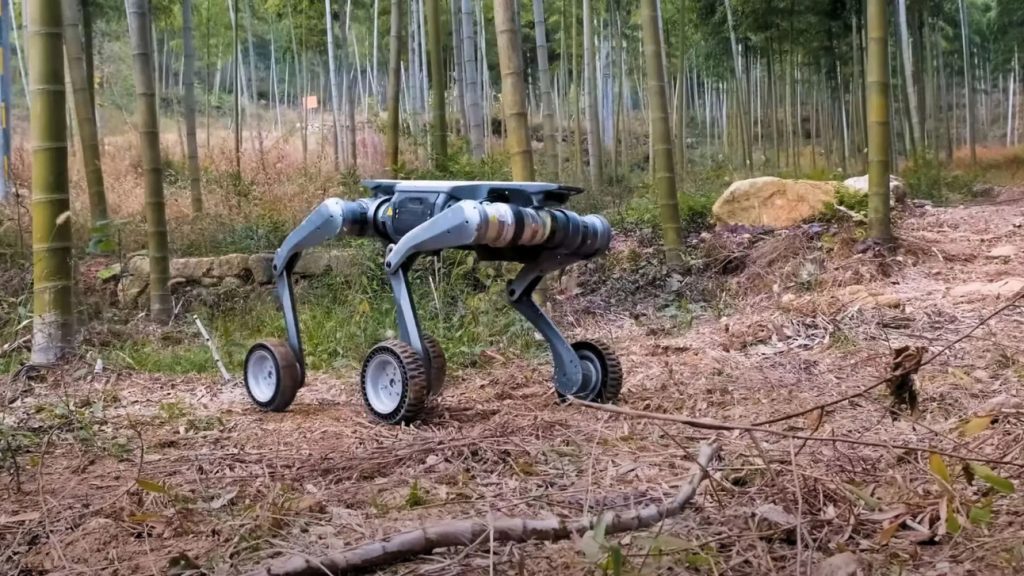The Big Robotics Gamble on Wall Street

In a surprising turn of events, even Wall Street is captivated by the potential of robots. The financial sector, known for its conservative investments, is now eyeing robotics as a lucrative frontier. But what fuels this growing interest?
Morgan Stanley estimates predict a staggering $4.7 trillion market by 2050. This projection places robotics as a powerhouse, overshadowing major players in other industries. Meanwhile, tech innovations, like a DIY robotic arm, make robotics more accessible than ever.
Wall Street’s Ambitious Robot Forecast
Morgan Stanley’s eye-catching $4.7 trillion forecast is a bold statement on the future of robotics. This estimate surpasses the combined revenue of the biggest automakers, signaling a tectonic shift in industry priorities. The potential for growth is immense, but what makes this market so attractive?
DIY Robotics: The Rise of Accessible Technology
A revolutionary change is underway with the introduction of a budget-friendly robotic arm, designed for everyday use. Open-source innovations now allow people to build robots in their own homes.
Hugging Face’s SO-101, a programmable robotic arm, exemplifies this shift. With reinforcement learning capabilities, it offers a glimpse into a more accessible future for robotics enthusiasts.
Hybrid Creations: The Emergence of Robo-Dogs
Robotics company Deep Robotics has introduced a quadruped that combines wheels and legs.
Equipped with advanced sensors, this robot navigates challenging environments with ease. Its applications range from inspecting underground utilities to aiding in disaster responses. These robotic aides promise to redefine our interaction with rough terrains.
China’s Robotics Training Revolution
In a bold move, China has completed a multi-robot training exercise with humanoid robots.
The robots demonstrated impressive autonomy, managing tasks with human-like reasoning. At Zeekr’s smart factory, these robots showcased the future of collaborative robotics, where swarms work together efficiently and intelligently.
Robots Rising: Transformative Impacts Across Industries
Robots are reshaping industries worldwide, from healthcare to firefighting. The development of MyoStep, a soft exoskeleton, is a game-changer for children with cerebral palsy.
Meanwhile, fire rescue robots in China exhibit how automation can enhance emergency response capabilities. Such advancements highlight the diverse and profound impacts of robotics in our daily lives.
Drones and the New Face of Warfare
In a daunting advancement, China has unveiled a drone capable of carrying substantial payloads despite its small size. AI technology is spearheading this leap in warfare strategies, making it a pivotal moment in military robotics.
Efficient and cost-effective, these drones underscore a future where unmanned systems play a crucial role in strategic defense initiatives.
The Growing Popularity of Robotic Assistants
Robotic assistants are entering everyday spaces, from restaurants to farms.
The MyoStep exoskeleton provides mobility assistance to children with cerebral palsy, meanwhile, robots like Bella enhance service efficiency in hospitality settings.
The dairy sector sees innovations too, with Lely’s dairy robots promising happier cows and increased milk production.
Market Activity: A Surge in Robotics Investments
Investment activities reflect the growing excitement in the robotics sector, with notable strides by companies like Pony AI.
Near Space Labs’ $20 million funding round for high-altitude robots showcases the increasing market confidence.
The momentum in investments mirrors a wider recognition of the lucrative prospects in robotics, aligning with Wall Street’s substantial bets.
As Wall Street and various industries invest heavily in robotics, the future seems laden with promise. From individual homes to expansive markets, innovations continue to redefine possibilities.
This surge in robotics interest signals not just a wave of technological advancements, but a transformative shift in how industries operate and grow. With each new development, robots are increasingly becoming a part of our everyday experience.





